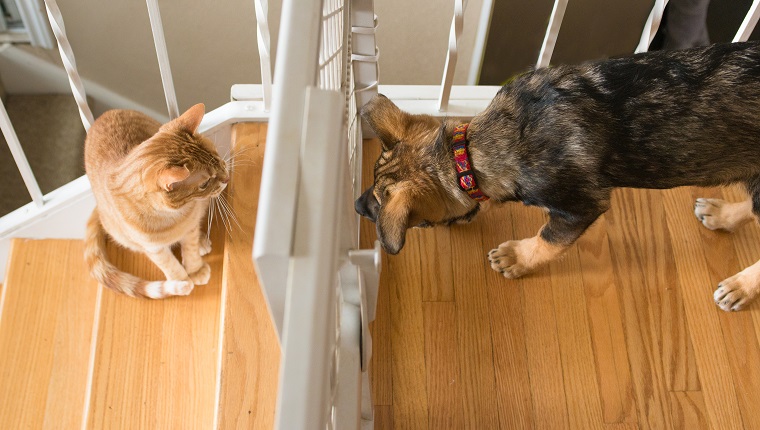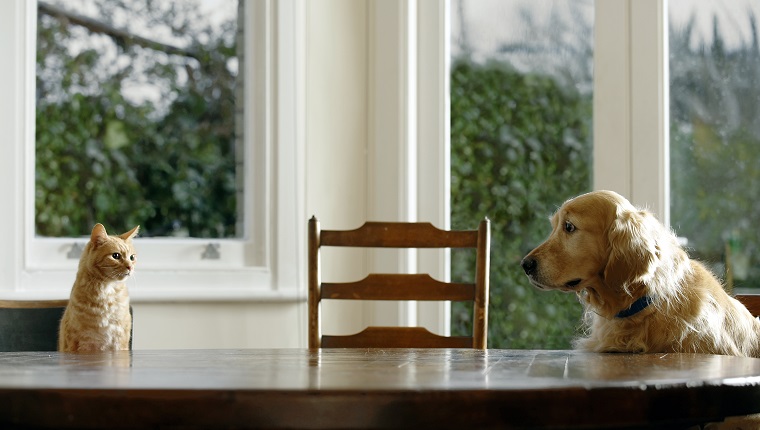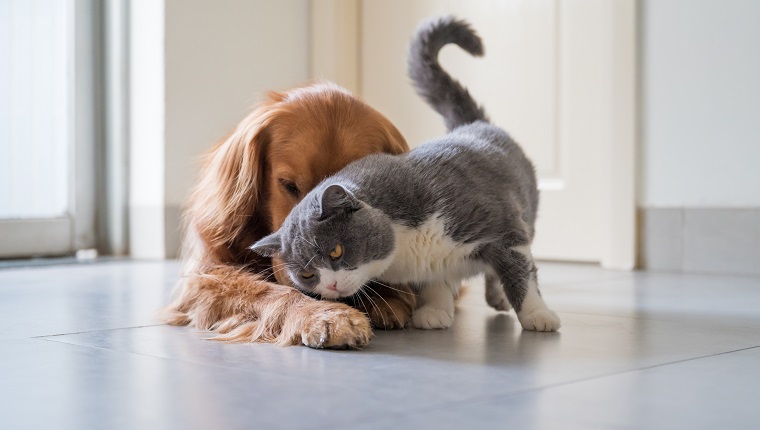If you live in a multi-species household, having your dog and your cat get along is an absolute essential for harmony in your home. It’s easier if your dog and cat grow up together; however, it’s still possible to integrate an adult dog into your home with your adult cat.
Like people, dogs will have difference tolerance levels for cats. Some breeds and mixed breeds, like Australian Labradoodles, take to cats very naturally. But other breeds may need some more training.
There are several methods by which you can do this, and only you will know what works for your pets. Here are some of the best tips and tricks to help you make your home happy again!
Try Some Scent Swapping
Both canines and felines are incredibly olfactory beings. That means they gather large amounts of information about the world around them by smell. You can use that as an advantage to help your animals get along with each other.
Scent swapping involves exposing each pet to the scents they’ll experience in their home with another pet. So you’ll want your cat to get accustomed to both the scent of their home and their new dog sibling. You’ll also do the same for your dog, getting them used to the new smells.
It’s easier to start before you bring both of your pets home, taking the scent of home and each other to the pets at the rescue center or shelter, or while they’re with their littermates. However, you can still do this while your pets are at home.
If possible, you should use your pets’ bedding for scent swapping. Place some of your cat’s bedding where your dog sleeps, and place some of your dog’s bedding where your cat sleeps.
However, if your pets bedding is too large to conveniently move, you can simply encourage them to sleep on an old shirt, towel, or blanket that has the scent of home and the other animal, and use this for the scent swap instead.
You can also gently pet your cat’s face with a soft cloth. Focus especially on and around the cheeks to pick up some of their scent from their facial pheromone centers. Only do this if your can will tolerate it, as you don’t want to unnecessarily stress out your pet.
Show your dog the smell of the cat, and reward with treats for calm behavior. Equally, you can simply encourage them to sniff the cat’s item and praise them for it. Take a similar approach with your cat, encouraging them to sniff and rewarding for calmer behavior.
Feed Them While They’re Separated By A Barrier

Using a barrier, like a door or a baby gate, try feeding your pets their meals on opposite sides. If your pup is already crate trained, you can have them eat in their crate. If you choose to use a door as your barrier, you may also find it useful wedge it open. That way, your pets can smell but not fully see each other.
The science behind this technique is that it teaches your pets that good things happen in the presence of each other. If you use a baby gate or something similar, it teaches your pets to ignore each other while they eat their meals — a skill that will prove invaluable when it comes to running a happy home.
These barriers also serve another purpose: safety! The creation of “cat free zones” and “dog free zones” will help both your resident animal and your new arrival feel safe and secure.
Though your resident animal may have previously gotten on well with dogs or cats, it can be a big change for one to appear permanently in their home! And even though your new pet may appear to be settling in well, having a new animal around may be a lot to comprehend.
Giving them time to relax before adding your other pets into the mix will help them to feel more comfortable in their new home.
Prevent Chasing Through Training
If you find your dog fixates too much on your cat and just wants to chase them, this is very important to work on. Allowing your dog to chase your cat may result in a disruptive household with two animals who cannot rest!
To work on this, you should play a game called DMT, which stands for “Distraction! Mark! Treat!” You play the game just how it sounds.
First get your dog in a calm position, such a sit or a down.
If your dog simply glances in the direction of the cat — who should be at some distance on the other side of a barrier, such as a baby gate — you should “mark” and give the dog a reward, like a treat. The “mark” is a sound that can come from a clicker or a word you say, like “good,” to let your dog know that they’ve done what you wanted them to.
Over progressive sessions, you can get closer and closer to your cat, always rewarding your dog for calm behaviors. If at any point your dog begins to become agitated or moves towards your cat, take them back a few paces and try again. Also do this if your dog won’t take the treats, as it means they are likely too excited by the cat and so are too close.
Cautiously Start To Remove The Barriers

If things are going well, you may wish to start to remove barriers, but only do this with some caution.
To begin, have your dog on a leash to allow you to manage the situation and prevent chasing. Once you feel confident, you can start to remove the leash, but never leave your pets unattended until you’re sure it’s safe.
Cat food is very tempting for dogs, and we never want to have any conflict around food sources. Consequently, if you are planning on free feeding your cat, you should leave the somewhere your dog won’t feel tempted to access it!
The same is true of the litter tray, which your dog may unfortunately view as an unlimited snack buffet! Not only is this incredibly unhygienic, but your cat may also view others going to their litter tray as an invasion of privacy and begin toileting elsewhere in your house. As a result, you should leave your cat’s litter tray somewhere your cat can access it, but not your dog!
Slow And Steady
Though it can seem like a daunting process, helping your cat and your dog get along doesn’t need to be tricky!
Taking the process slow and steady and at the pace both of your animals are comfortable with will help.
Get your family involved in this training, too. Having multiple people around so you can read both of your pets’ body language is crucial because it will help you figure out what your pets are and aren’t comfortable with.
Have you ever tried to help your dog and cat get along? What techniques worked for you? Leave us a comment telling us all about it below!




